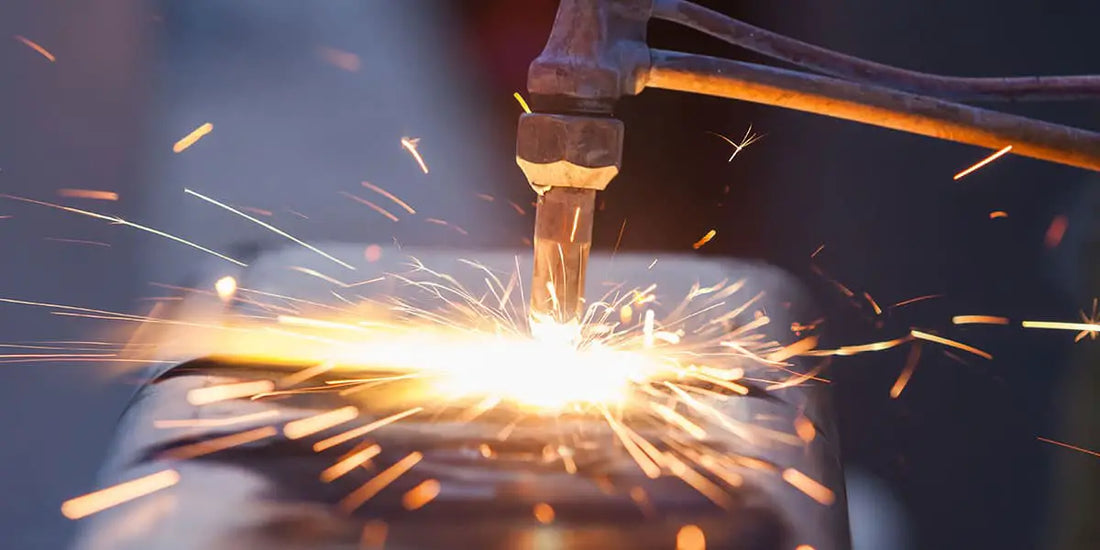1. Not paying attention to selecting the ideal voltage during welding
(Phenomenon)
Regardless of whether it is root, fill or cover passes, the same arc voltage is chosen for all welds, regardless of channel size. This can result in insufficient penetration and width, leading to defects such as undercuts, porosity and spatter.
(Measure)
In general, choosing the suitable long or short arc for different situations can provide better welding quality and work efficiency.

2. Not controlling the welding current during welding
(Phenomenon)
To speed up the welding process, some welders avoid chamfering the joints of medium and thick sheets.
This can result in reduced strength, failure to meet standard requirements, and cracking during bend testing, compromising the integrity of the welded joint and posing potential safety risks to the structure.
(Measure)
The welding current must be controlled according to the process evaluation, allowing a fluctuation of 10-15%.
The size of the blunt edge of the bevel should not exceed 6 mm. For sheet thicknesses greater than 6 mm, a chamfer for welding is required.
3. Not paying attention to the coordination of welding speed, welding current and electrode diameter
(Phenomenon)
When welding, it is essential to control the welding speed, welding current, electrode diameter and welding position.
For example, during root pass welding of a full penetration fillet weld, inadequate welding speed can lead to defects such as incomplete fusion, slag inclusion, and root porosity due to insufficient time for gas and slag expulsion.
When welding the cover pass, too fast a speed can also cause porosity, while too slow a speed can result in an excessively high weld bead and an uneven appearance.
When welding thin plates or welds with small, blunt edges, slow welding speed may cause burns.
(Measure)
Welding speed has a significant impact on welding quality and production efficiency. By coordinating the welding current, weld position (root pass, fill pass, cover pass), weld thickness and groove size, an appropriate welding speed can be selected.
Aim for a faster welding speed that ensures complete penetration, easy gas and slag expulsion, no burning and good formation to improve production efficiency.
4. Not paying attention to arc length control during welding
(Phenomenon)
During welding, the arc length is not adjusted properly according to factors such as groove type, welding layers, welding style and electrode model. Due to improper use of welding arc length, it is difficult to obtain high-quality welds.
(Measure)
To ensure weld quality, short arc operation is generally used during welding. However, the appropriate arc length can be chosen according to different situations to achieve ideal welding quality.
For example, use a shorter arc for the first layer of V-groove butt welds and fillet welds to ensure penetration and avoid undercutting.
The second layer may have a slightly longer arc to fill the weld. Use a short arc when the weld gap is small and a slightly longer arc with higher welding speed when the gap is large.
5. Not paying attention to controlling welding deformation
(Phenomenon)
Failure to pay attention to deformation control aspects such as welding sequence, personnel arrangement, groove type, selection of welding specifications and method of operation can result in significant post-weld deformation, making correction difficult and increasing costs.
This is especially true for thick sheets and large parts, where mechanical correction can cause lamellar cracks or tears, and flame correction is expensive and can easily cause overheating if not operated correctly.
For parts with high precision requirements, failing to take effective measures to control deformation may result in installation dimensions that do not meet usage requirements and even rework or scrap.
(Measure)
Adopt a reasonable welding sequence, select appropriate welding specifications and operation methods, and use counter-deformation and rigid clamping measures.
6. Not paying attention to temperature control between passes during multilayer welding
(Phenomenon)
When performing multilayer welding on thick sheets, not paying attention to temperature control between passes can cause problems.
If the interval between layers is too long, cold cracking may occur without reheating before welding; If the interval is too short and the temperature between passes is too high (exceeding 900°C), the properties of the weld and the heat-affected zone may be affected, resulting in coarse grains, reduced toughness and plasticity, and potential hidden hazards in the joint. .
(Measure)
During multilayer welding of thick plates, temperature control between passes must be reinforced. Inspect the temperature of the base material during continuous welding to maintain the inter-pass temperature as close as possible to the preheat temperature and control the maximum inter-pass temperature.
7. Proceed to the next layer of multilayer welds without removing slag and surface defects
(Phenomenon)
During multilayer welding of thick plates, welders may proceed to the next layer without removing slag and defects, which can result in slag inclusions, porosity, cracks and other defects in the weld, reducing joint strength and causing layer spatter. subsequent ones.
(Measure)
For multilayer welding of thick plates, continuous welding must be carried out for each layer. After each layer is welded, immediately remove slag, surface defects and spatter. If slag inclusions, porosity or cracks are found that affect the quality of welding, they must be completely removed before continuing welding.
8. Insufficient weld size for required penetration in butt and fillet joint combinations
(Phenomenon)
For tee joints, cross joints, and angle joints that require full penetration, the weld size may be insufficient, or the weld size of the connection between the web and the top flange on crane beams or similar components with design calculation requirements fatigue may be inappropriate. This may result in the strength and stiffness of the weld not meeting design requirements.
(Measure)
For tee joints, cross joints, and fillet joints that require full penetration in butt joint combinations, the weld size must meet design requirements and

























































